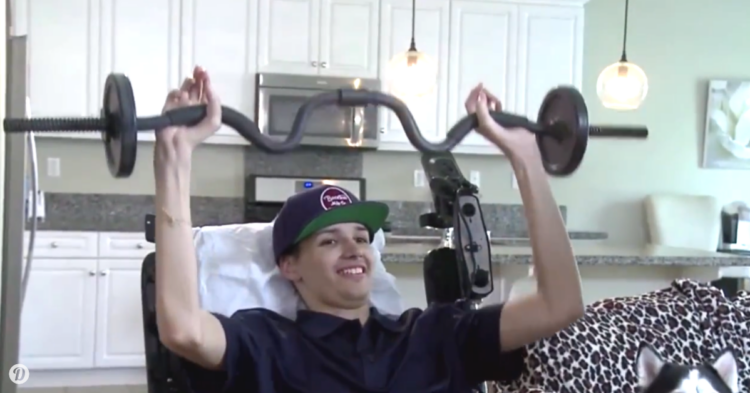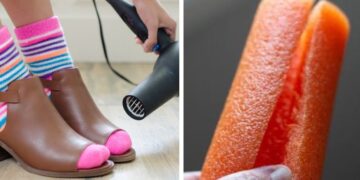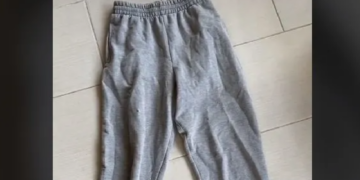Life isn’t always good at giving out second chances. If something unexpected comes along and causes a major change in our lives, we often have no other choice but to learn how to adjust our lives around it.
But sometimes, just when it seems the situation couldn’t get any more grim, that second chance can appear just as abruptly as the event that hurt us in the first place.
And we’d be hard pressed to find someone who understands that better than one young man from California.
It wasn’t so long ago that 21-year-old Kris Boesen was living the fairly average life of an insurance broker.

According to USC , that all changed when he was driving on a wet road in Maricopa, California.
His white Nissan 350Z suddenly fishtailed before striking a curb, a tree, and then a telephone pole, which broke Boesen’s neck.
Boesen went into surgery soon after the crash and had his neck bones fused together, but he soon discovered something disheartening.

He could now only move his left arm up and down, which was less helpful to him than it sounds because his hands were stuck in a clenched position.
This meant he couldn’t hold anything, which means he couldn’t feed himself
He said, “I was basically just existing. II wasn’t really living my life.”
However, this didn’t mean that Boesen had nothing to hope for.

The surgeon who fused his neck bones knew enough about his condition to conclude that he might benefit from an experimental treatment at USC’s Keck Medical Center.
So they contacted neurologist Charles Liu, who was working on a clinical trial to help people with spine injuries by using stem cells.
For years, doctors have studied the potential of using stem cells to treat seemingly hopeless conditions.

Since these “blank slate” cells could potentially develop into many types of cells throughout the body, they could theoretically replace or repair severely damaged tissue.
This could help doctors do anything from curing blindness caused by age-related macular degeneration to treating stroke victims and those living with ALS, to eliminating HIV by destroying the “pathway” the virus needs to infect blood cells.
However, none of these medical applications have actually been tested in humans until fairly recently.

In Boesen’s case, the procedure would involve stopping his breathing long enough to inject about 10 million stem cells directly into his spine.
This could help Boesen regain control of his arms and hands, but they had to time it right. Too early and the inflammation in his spine would kill off the stem cells. Too late and scar tissue would build up and interfere with the cells’ effects.
Dr. Liu and Boesen’s family also made sure that he understood the risks involved with the procedure.

As Liu explained, it was entirely possible that Boesen would become fully paralyzed or that the stem cells would just end up forming a tumor.
Regardless, Boesen managed to mark an X on the consent form and he would enter surgery yet again a month after his accident.
His operation seemed to go according to plan and only four days later, he was already seeing results.

For the first time in months, Boesen could not only hold his phone, but actually send texts.
Within months, the list of things he could do again would keep getting longer. He could use a wheelchair, write his name, feed himself, and even lift weights.
Some of this improvement could be attributed to the natural recovery process, but it Liu said it went above and beyond what doctors normally see.

Still, Liu was careful not to over-promise with the results of the surgery and the recovery process that followed. For instance, it’s still unlikely that Boesen will ever walk again.
But the procedure’s success still put Boesen on track to regaining his independence and allowed for further testing, including in those with less severe injuries.
As Boesen put it, “All of this wouldn’t have been possible without the stem cells.”
It’s important to remember both that stem cell treatments are still experimental and that there are no shortage of “clinics” that promote them as sketchy cure-all treatments.

According to USC, patients should check for any scientific studies, independent risk assessments, and FDA approvals of specific stem cell treatments before undergoing them.
They also warned to avoid any clinic that relies on patient testimonials or claims that the same stem cells can treat multiple diseases.
This also goes for any place that fails to clearly outline the procedure involved and where they got the stem cells, fails to clearly outline the risks involved, or charges patients for what is supposed to be a clinical trial.
h/t: USC

















































